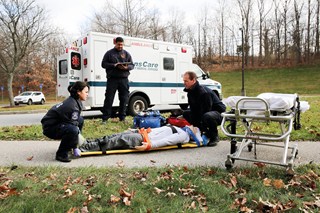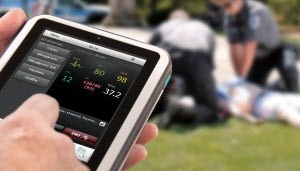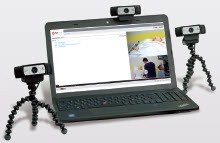Watch On-Demand: Using Simulation to “Think Outside the Box”

Improving Patient Safety with In Situ Simulation
In situ simulation is a rapidly evolving tool with the potential to improve patient safety.1 When conducting in situ simulation, there are four components that will help maximum effectiveness.2
 |
 |
 |
 |
|||||||
|
|
|
|
|
Watch Now On-Demand: Using Simulation to “Think Outside the Box”
|
|
Training that offers a high level of engagement for EMS providers can be difficult to achieve. Today’s EMS providers seek education that is innovative and cutting edge. Through the use of simulation, you can create an immersive learning environment, achieve high-level learner engagement and improve patient outcomes.
This one hour webinar will explore insights on making your simulations more mobile, adding realism that makes a difference, and why it matters. Attention will be placed on the benefits of training in a realistic environment and why in-situ training is important for learner engagement, all while “thinking outside the box.”
Speaker: Richard Latham, EMT-P, is the lead simulationist at the Peter E. Johnston Simulation and Education Center at Doctors Hospital in Columbus, Ohio, where he heads up the EMS Simulation Program. He is also an EMS Instructor for OhioHealth EMS. He has been in EMS for 17 years and has worked in simulation for the past six years.
Do you have the right tools to conduct your simulation training on the move?
In situ simulation training requires portable, robust solutions that enable training to take place anywhere - from the roadside to the bedside. Deliver highly effective simulation training with:
 |
 |
 |
SimMan® ALSSimMan® ALS has a mobile, durable design allowing training to take place in clinically realistic environments. |
SimPad® PLUSSimPad® PLUS is a tool that makes simulation available at your fingertips - when and where you need it. |
SimView™ MobileIncrease the educational impact of debriefing in situ simulations by incorporating synchronized audio, video, and simulation information with SimView™ Mobile. |
Citations:
1 Patterson, M. D., Blike, G. T., & Nadkarni, V. M. In Situ Simulation: Challenges and Results.
2 Miller KK, Riley W, Davis S, Hansen HE: In situ simulation: a method of experiential learning to promote safety and team behavior. J Perinat Neonatal Nurs. 2008, 22 (2): 105-113.

 Canada
Canada








